As winter wears on, it can plague us with a variety of skin problems – especially dull, lackluster skin. Dry skin, harsh winter elements, and a build-up of dead skin cells can all combine to create the perfect storm of tired, unhealthy skin.
Enter the alpha hydroxy acids! These natural acids are derived from fruits and can have a serious impact on winter skin. These acids help exfoliate your skin at a cellular level, helping it get rid of dead skin cells that can clog your pores and dull your complexion. In this post, we will discuss the benefits of alpha hydroxy acid for different skin types and how to use these beneficial ingredients for your skin.
What are alpha hydroxy acids?
Alpha hydroxy acids (AHAs for short) are chemical compounds found naturally in many common foods, and especially in fruits. Green apple, berries and citrus fruits are all natural sources of alpha hydroxy acids. These acids are commonly included in skin care product formulas to help cleanse and exfoliate the skin. Acne products, exfoliants, and antiaging products often contain alpha hydroxy acids.
Alpha hydroxy acids are gentler on your skin than conventional facial peels. They are so gentle that they are generally considered suitable for use on sensitive skin. Lactic acid in particular has been shown to benefit sensitive skin types.
Importantly, alpha hydroxy acids exfoliate your skin at the cellular level, weakening the bonds that keep dead skin cells stuck to the surface of your skin. You may not literally see the dead skin being removed when you use alpha hydroxy acids, but they definitely do the job.
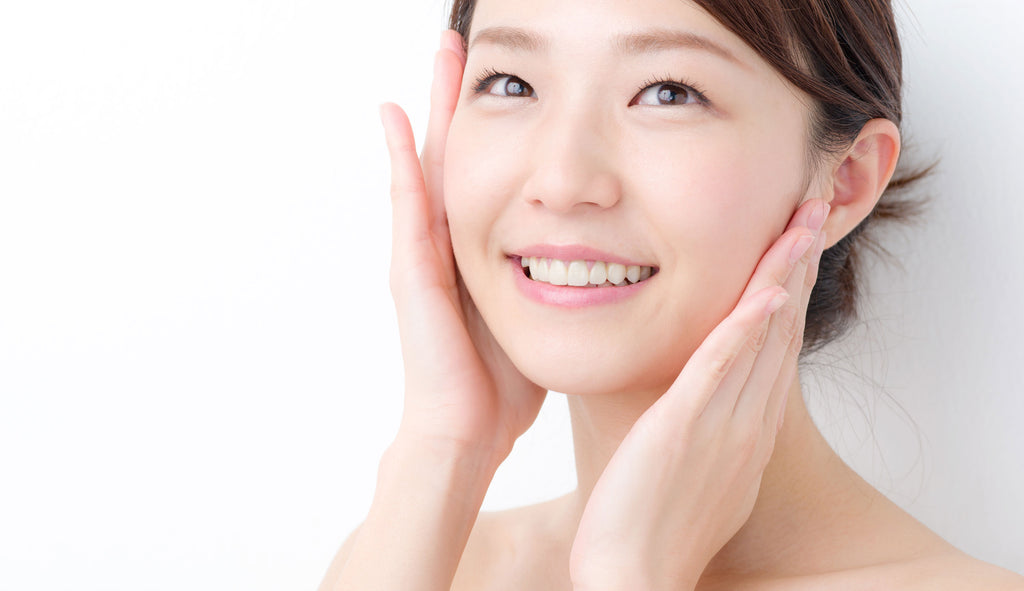
How to use alpha hydroxy acids
AHA benefits for dull skin and uneven complexion
Dull skin is often caused by a combination of poor circulation and a build-up of dead skin cells. Alpha hydroxy acids can help address both of these issues in one fell swoop by promoting collagen and blood flow to your skin while helping it shed those pesky, dead cells. Alpha hydroxy acids can also benefit dull, tired skin by promoting healthy cell regeneration.
AHA for acne-prone skin
Acne occurs when the follicles in your skin become clogged with excess sebum and dead skin cells. The exfoliating powers of alpha hydroxy acids can benefit acne-prone skin by keeping pores clear of dead skin cells, and therefore reducing the severity of breakouts. Some alpha hydroxy acids also have antimicrobial properties that can help fight acne-causing bacteria in your skin tissue. And not only alpha hydroxy acids help fight existing rashes and prevent future ones. they can also help reduce the appearance of scarring from previous acne breakouts.
Alpha hydroxy acids for sun damaged skin
Alpha hydroxy acids, especially lactic acid, can also provide great results for photo-treated skin. If you notice age spots or discoloration on your skin that may be due to sun exposure, a product with alpha hydroxy acids can help promote healthy cell turnover, resulting in a more even complexion with dark spots. These products can be used on your face, neck and chest to fight the signs of skin damage caused by harsh UV rays.
Alpha hydroxy acids are generally considered safe to use on all skin types, but it’s important to note that your skin may be more photosensitive than usual after exposure to these ingredients. If you’ve just used a product containing an alpha hydroxy acid, we recommend taking extra care to apply a layer of sunscreen before leaving the house for the day. There is no evidence linking alpha hydroxy acids to an increased risk of skin cancer, but it’s still important to protect your skin, especially when it can be unusually sensitive!
Alpha hydroxy acids for skin aging
Alpha hydroxy acids benefit the skin at the cellular level by promoting collagen production, cell regeneration and healthy blood flow. They have been used as anti-aging treatments for centuries, and it is even rumored that Cleopatra used to bathe in sour milk (a common source of lactic acid). Alpha hydroxy acids can ease the appearance of fine lines, wrinkles and dark spots and can also promote skin elasticity and firmness. Meanwhile, they can brighten and even out your complexion, making them a plant-based powerhouse for mature skin.
6 Types of alpha hydroxy acids
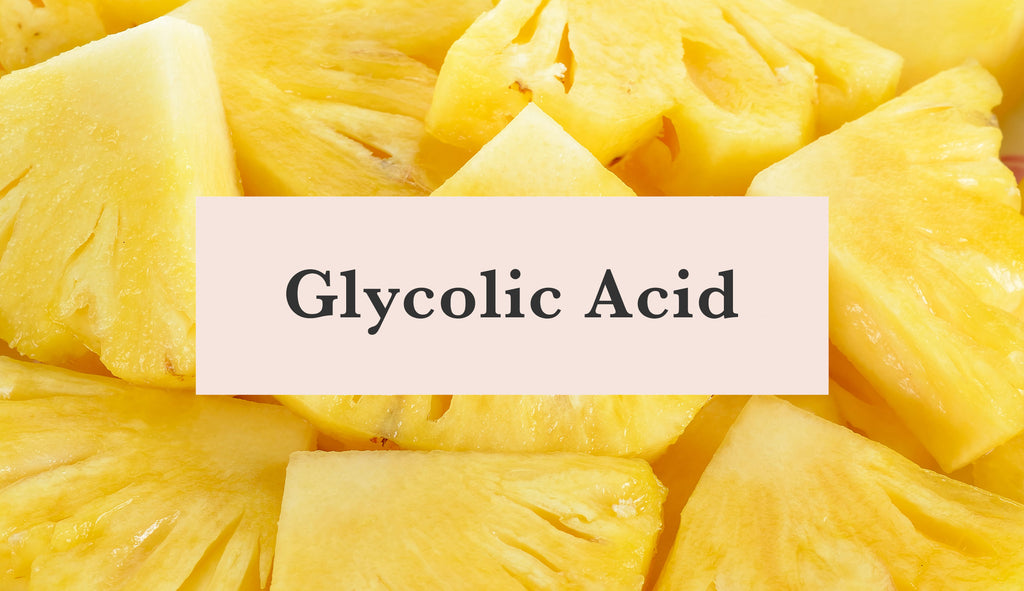
Glycolic Acid
Glycolic acid comes from natural sources such as pineapple and sugar cane. The it penetrates deeply in the skin to promote healthy cell function and youthfulness.
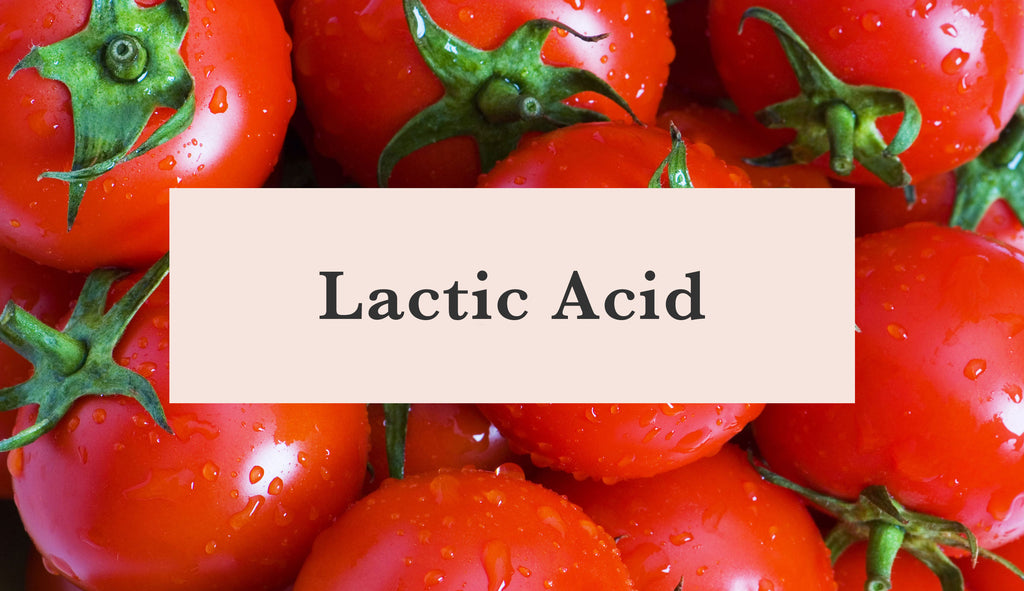
Lactic acid
Lactic acid can come from tomatoes or milk. Its exfoliating properties make it a powerful treatment for acne and keratosis pilaris. It can also help tighten and tone the skin. It is also especially soft making it a good choice for sensitive skin.
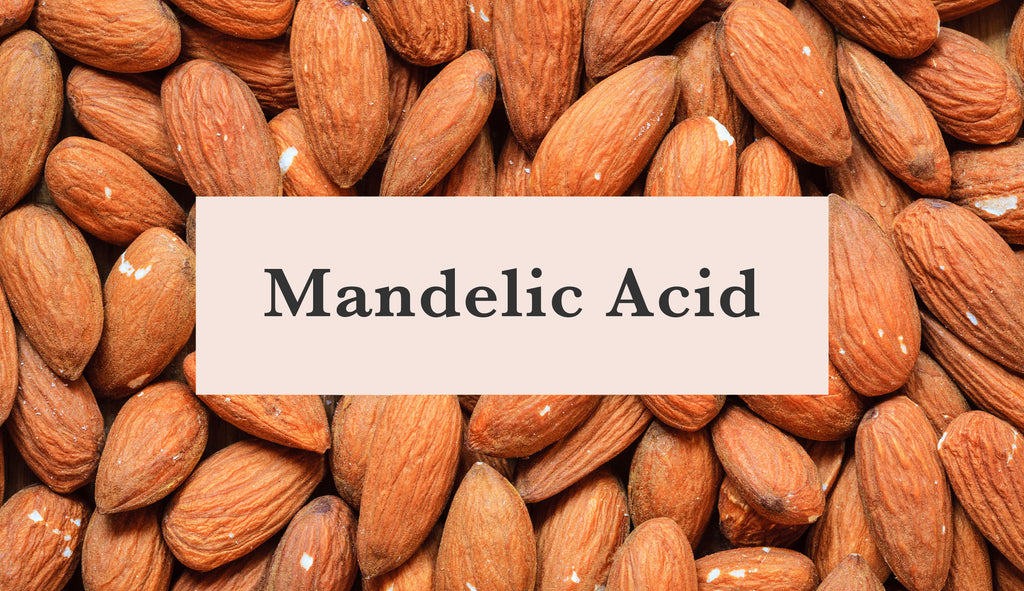
Mandelic Acid
Mandelic acid can come from almonds or cherries. It has exfoliation and antibacterial propertiesmaking it an excellent ingredient in products for acne-prone skin.
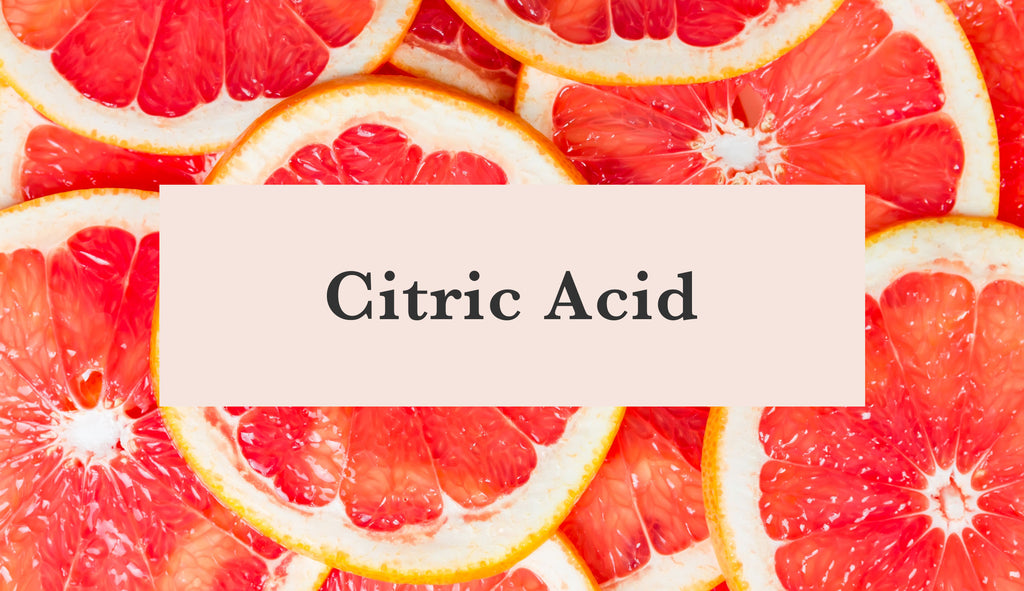
Citric acid
Citric acid is one of the most recognizable AHAs, as it is often found in food. As its name suggests, it comes from various citrus fruits. Similar to mandelic acid, it has antibacterial properties which can help fight acne while exfoliating your skin.
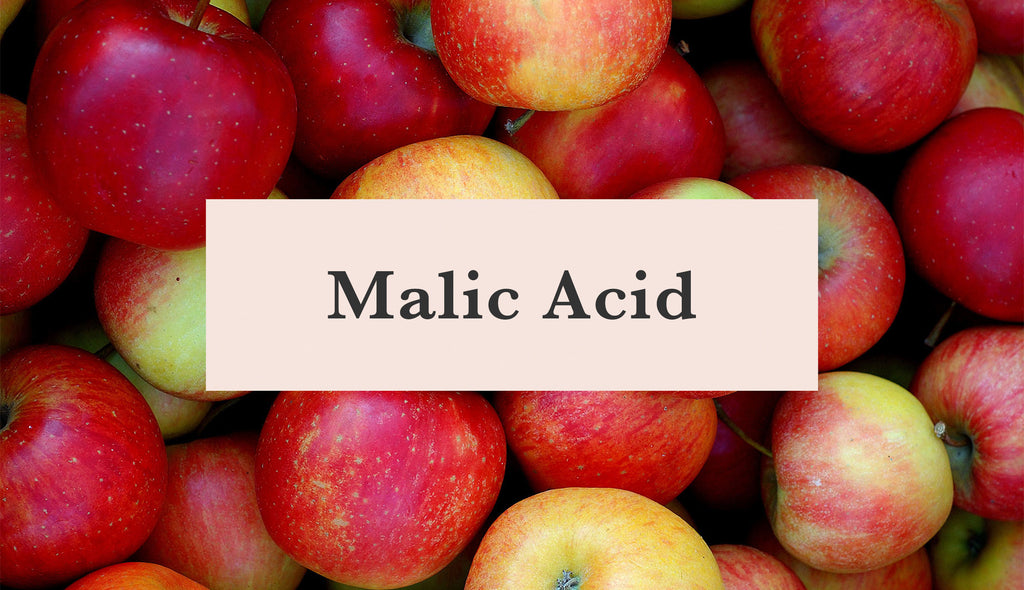
Malic acid
Malic acid is most often derived from apples. It’s not just a great exfoliator – it’s also special rich in antioxidantsmaking it an excellent antiaging ingredient in skin care products.
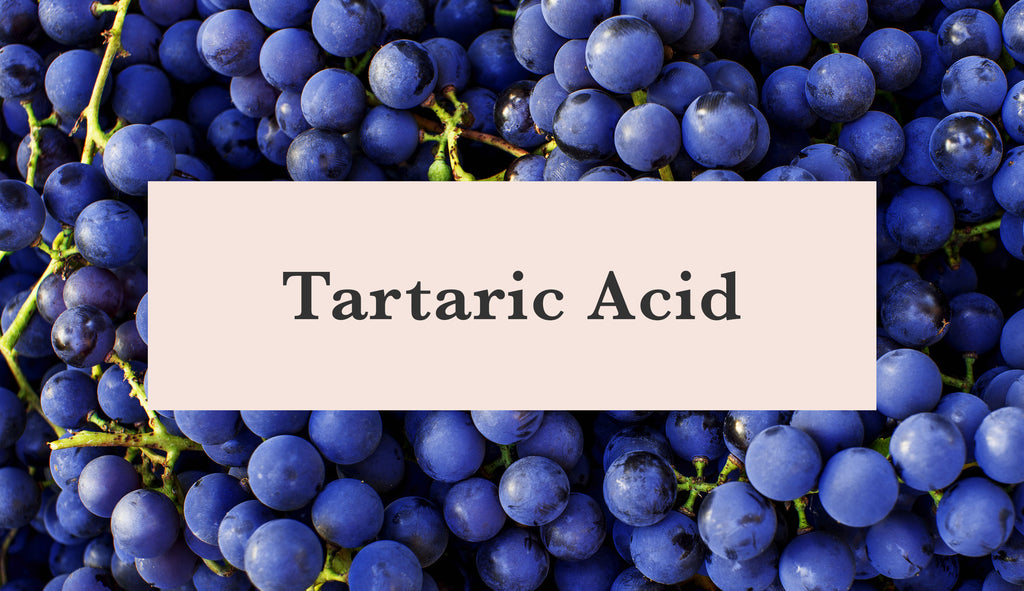
Tartaric acid
Tartaric acid usually comes from grapes. It has PH balancing properties that can help soothe and heal inflammation and over-processing.
Alpha Hydroxy Acids Vs. Beta hydroxy acids in skin care
While alpha hydroxy acids can be especially beneficial for damaged skin and mature skin, there is another class of hydroxy acids out there that can provide great results for oily skin. These are called beta hydroxy acids.
Like alpha hydroxy acids, beta hydroxy acids come from plant sources (especially fruits). But while alpha hydroxy acids are water soluble, beta hydroxy acids are oil soluble, meaning they dissolve in oil. This makes them an effective product for use on oily skin. The most common beta hydroxy acid in skin care is salicylic acid, which is usually derived from strawberries and is often found as an ingredient in acne treatments.
100% PURE Products
When it comes to boosting your skincare routine with the power of AHAs, we offer a range of effective products designed to boost your skin’s radiance and youthful appearance. These high-quality fruit-derived formulas are made with natural ingredients that not only exfoliate, but also nourish and rejuvenate your skin. Incorporating these products into your regimen can help you achieve brighter, healthier-looking skin while maximizing the benefits of AHAs.
Here are some standout 100% PURE products to add to your skincare line:
Vitamin C serum
This serum boosts collagen production, complements AHAs to brighten skin, and promotes cell regeneration for anti-aging benefits.
Multivitamins + Antioxidants Powerful PM serum
It contains retinol, which pairs well with AHAs in your nighttime routine to effectively reduce wrinkles and fine lines.
10% Fruit Acids Apple Enzyme Resurfacing Serum
This serum provides a gentle yet effective exfoliation, helping to brighten skin and reduce texture.
Exfoliating Cleanser with Apple Enzyme 7% Fruit Acids
A cleanser that uses fruit acids to exfoliate and cleanse the skin, making it a great addition to your skincare routine.
Looking for more natural skincare and makeup guides with antiaging products and tips? Check out our guide to the best anti-aging under eye concealer or a list of the top 9 anti-aging ingredients!
Frequently Asked Questions about AHA’s
Which AHA is best for sensitive skin types?
Lactic acid is often considered the best AHA for sensitive skin types because of its gentle exfoliating properties. Derived from milk, lactic acid helps exfoliate without causing significant irritation, making it suitable for people with sensitive skin.
Can AHAs help with hyperpigmentation or dark spots?
Yes, AHAs can be effective in reducing hyperpigmentation and dark spots. They promote healthy cell renewal, which helps fade discoloration over time. By exfoliating the surface layer of the skin, AHAs encourage the growth of new, evenly pigmented skin cells, leading to a brighter, more even complexion.
What precautions should be taken when using AHAs during the day?
When using AHAs during the day, it is essential to apply a sunscreen with a high SPF, as these acids can increase your skin’s sensitivity to the sun. It is also recommended to start with lower concentrations to assess your skin’s tolerance and avoid combining AHAs with other strong ingredients such as retinoids or strong exfoliants to minimize irritation.
Are alpha hydroxy acids safe to use on all skin types?
AHAs are generally safe for most skin types, but people with very sensitive or reactive skin may need to be careful. It is recommended that you do a patch test before using a new product containing AHAs to start with lower concentrations to gauge your skin’s reaction. Those suffering from certain conditions, such as rosacea, should consult a dermatologist before use.
How do glycolic acid and lactic acid differ in skin care benefits?
Glycolic acid, derived from sugarcane, has a smaller molecular size, allowing it to penetrate the skin more deeply and exfoliate effectively. It is known for its ability to improve skin texture and reduce the appearance of fine lines. Lactic acid, on the other hand, is larger in molecular size and tends to be milder, making it a great choice for sensitive skin. It provides exfoliation while also hydrating, making it suitable for promoting overall skin health and radiance.
